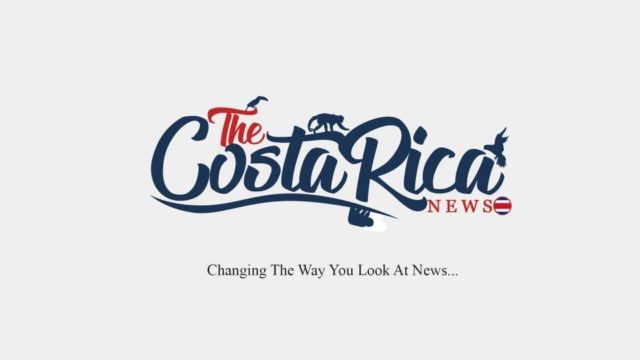Costa Rica, officially called the Republic of Costa Rica, is a sovereign nation organized as a unitary presidential republic composed of 7 provinces. Located in Central America. It borders Nicaragua to the north, the Caribbean Sea to the east, Panama to the southeast and the Pacific Ocean to the west. As for the maritime borders, it borders Panama, Nicaragua, Colombia, and Ecuador. It has 5,003,393 inhabitants according to the latest demographic projection. Its capital city, as well as political and economic center, is San José.
Costa Rican history

The country was inhabited for at least 5000 years BC, but the Amerindians of Costa Rica were few in comparison to the great pre-Columbian civilizations. Christopher Columbus discovered and baptized Costa Rica in 1502 during his fourth trip. The Spanish conquest was made there much later than in the rest of Central Latin America because of the virulent resistance against the European invaders from the Native inhabitants.
Juan de Cavallón took the first victorious Spaniards to Costa Rica in 1561. Juan Vázquez de Coronado succeeded him in 1562-1565 and established Cartago and other colonies in the Central Valley. Costa Rica was part of the general captaincy of Guatemala, in the Viceroyalty of Mexico, starting in 1570, but its departure from the rule of Guatemala and its apparent lack of wealth allowed it to develop without suffering the same direct intervention as the other provinces of Central America.
Being quite a few in the country, the representatives of the Spanish authority and the Church let the country develop away from the historical current of Latin America. The colony did not take certain importance in the eyes of the Guatemalan authorities until the end of the 18th century when the Spaniards put emphasis on commercial agriculture and made tobacco, an important export product. Tobacco exports favored the creation of a more prosperous society and Costa Ricans dominated the intellectual and political life of Central America at the beginning of the 19th century.
The region followed Mexico in its separation from Spain in 1821, and then became one of the five states of the United Provinces of Central America from 1824 to 1838. Costa Rica avoided engaging in the civil wars that exalted the confederation. It then formed a sovereign republic. Costa Rican politics were similar to the liberal-conservative ideologies of the rest of Latin America and the cities of Cartago, San José, Heredia, and Alajuela disputed supremacy in the country until San José managed to take the lead.
The nineteenth century was also marked by the prodigious development of coffee cultivation that then became an important export product. Under the mandate of Tomás Guardia (1870-1882), Costa Rica benefited from large foreign investments in railways and other public facilities. The establishment in the country of the United Fruit Company, the banana empire created by the American businessman Minor C. Keith, allowed the development of coastal plains, railways, as well as other infrastructures, but also returned to Costa Rica more dependent on foreign markets and capitals.
The National Republican Reform Party (PRN) won the presidency with León Cortés Castro in 1936, and again in 1940 with Rafael Ángel Calderón Guardia. The electoral victory of the liberal Otilio Ulate in 1948 gave way to a civil war when the PRN tried to remain in power. A new political force, the National Liberation Party (PLN), led by José Figueres Ferrer, managed to impose Otilio Ulate as ruler and became the dominant party in the country, a position it would always occupy.
Costa Rica has become from then on the most democratic country in Latin America. Figueres was president from 1953 to 1958, and again from 1970 to 1974. The PLN won the presidential elections of 1974 with Daniel Oduber Quirós, but a strong opposition against his rule, accompanied by economic problems, led to the taking of political power by an opposition coalition led by Rodrigo Carazo Odio in 1978.
The PLN returned to power in 1982, with the election for the presidency of Luis Alberto Monge Alvarez; Óscar Arias Sánchez, also of the PLN, succeeded him in 1986. In his mandate, he prioritized the restoration of peace in Central America and ensures political stability in the region.
Rafael Angel Calderón Fournier, son of former President Rafael Calderón, won the presidential elections of February 1990 with the Social Christian Unity coalition. In February 1994, José-Maria Figueres Olsen, a member of the PLN and son of former President José Figueres Ferrer, was elected president.
A tropical paradise

Costa Rica is humid, located between 8° and 11° north latitude, relatively close to the equator. The country’s climate is divided into two seasons, dry and rainy.
The geography of Costa Rica also has a great influence on the weather patterns of each particular region. The mountain range that crosses from the northwest to the southeast separates the Pacific and the Caribbean side. The rainy season on the Caribbean side starts from mid/late April and resumes in December and January. The dry season occurs around August or September and the rainiest months are July and November. The rainy season on the Pacific slope occurs between May and November. The Pacific slope undergoes an extremely dry season, which the experience of many months provides for no rain could fall. The humidity is also higher in the Caribbean area than in the Pacific area. Annual normal temperature is approximately 27° C in the coastal lowlands, around 21 ° C in the Cordillera Central areas and around 10° C in the mountain areas.
There is no doubt that we are a country of blessed by grace that offers options for all who visit us. So Costa Rica is waiting, come and enjoy the “Pura Vida” in this haven of bliss.

